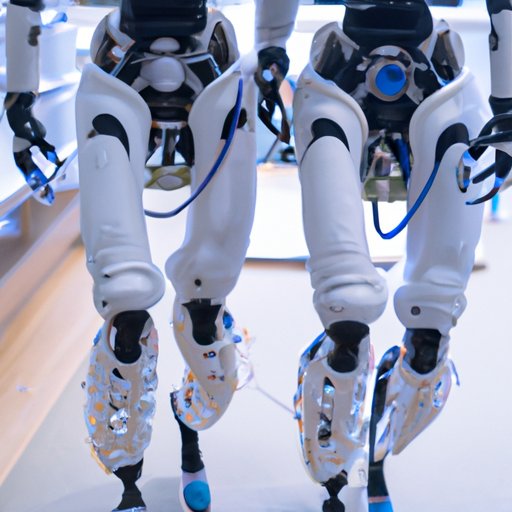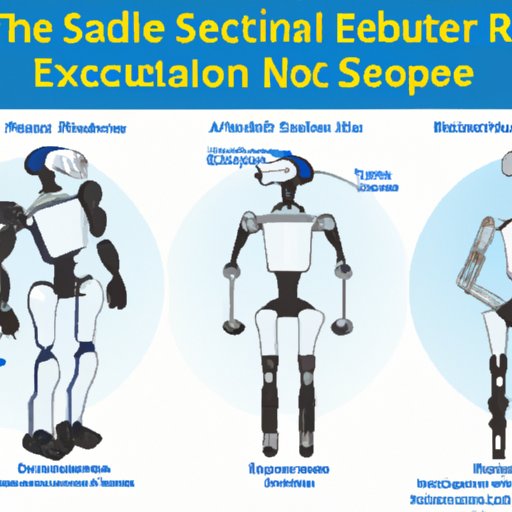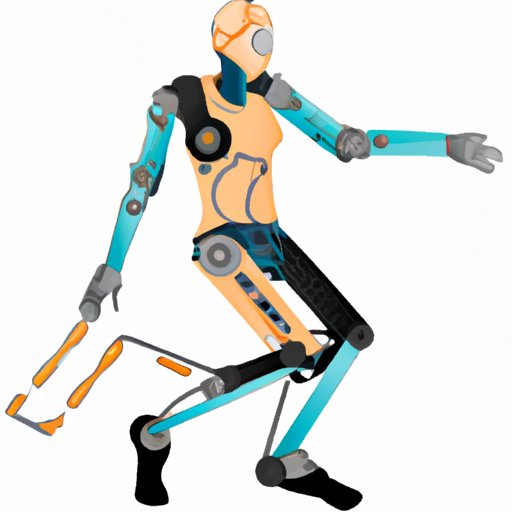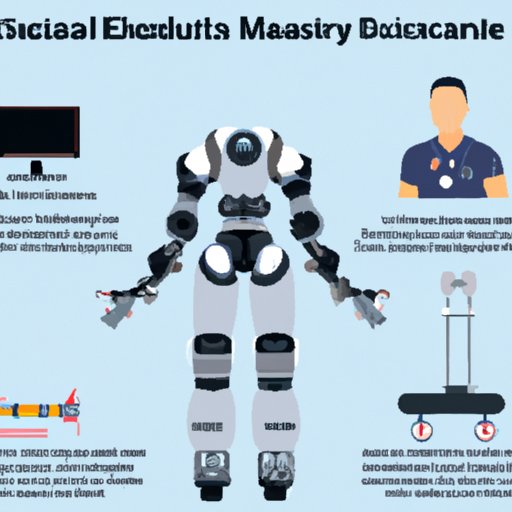Introduction
Robotic exoskeletons are devices that provide support and assistance to those who have difficulty performing activities due to physical limitations. They are becoming increasingly popular in healthcare, military, and industrial applications, as they can help improve mobility, reduce fatigue, and increase efficiency. But what exactly is a robotic exoskeleton? This article will explore the definition of robotic exoskeletons, the science behind them, their uses, and considerations for choosing one.
Definition of Robotic Exoskeletons
Robotic exoskeletons are wearable machines or devices that are designed to assist people with physical disabilities or impairments. They provide support, stability, and increased strength to the user, allowing them to perform tasks or activities that may otherwise be difficult or impossible. The term “exoskeleton” comes from the Greek words “exo,” meaning outside, and “skeleton,” referring to the human body’s skeletal structure.
Overview of the Science Behind Robotic Exoskeletons
Robotic exoskeletons are powered by a combination of mechanical, electrical, and software components. In most cases, they rely on motors, sensors, and batteries to detect and respond to the user’s movements. The exoskeleton then provides support and assistance based on the user’s needs. For example, if the user needs more stability while walking, the exoskeleton will adjust accordingly to provide extra stability.
In addition, robotic exoskeletons are designed to be lightweight and adjustable, allowing users to easily move and adjust the device depending on their individual needs. Some exoskeletons also feature artificial intelligence (AI) technology, which allows the device to learn from its environment and adapt its performance accordingly. This helps to make the user experience more comfortable and effective.

Exploring the Uses of Robotic Exoskeletons
Robotic exoskeletons are being used in a wide range of applications, from medical rehabilitation to military operations. Here are some of the ways robotic exoskeletons are changing lives:
- Medical Rehabilitation: Robotic exoskeletons are being used to assist patients with movement disorders, such as cerebral palsy, traumatic brain injury, and stroke. These devices help to improve range of motion, coordination, balance, and strength, enabling patients to perform everyday tasks with greater ease and comfort.
- Military Operations: Robotic exoskeletons are being used to increase the effectiveness of soldiers in the field. They help to enhance strength, endurance, and agility, allowing soldiers to carry heavier loads and perform tasks that would otherwise be too strenuous or dangerous.
- Industrial Applications: Robotic exoskeletons are being used in industrial settings to help workers lift heavy objects, reach high shelves, and work in difficult environments. They are designed to reduce the risk of injury and increase efficiency, allowing workers to do more with less effort.

A Comprehensive Guide to Robotic Exoskeleton Technology
Robotic exoskeleton technology is rapidly evolving, with new devices being developed every day. Here is a comprehensive guide to the benefits, challenges, and future developments in robotic exoskeleton technology:
Benefits of Robotic Exoskeletons
Robotic exoskeletons offer a range of benefits for users, including improved mobility, reduced fatigue, and increased efficiency. According to a study conducted by the European Society for Medical and Biological Engineering, robotic exoskeletons can help to improve quality of life for those with physical impairments, as well as providing relief from pain and fatigue.
In addition, robotic exoskeletons can help to reduce the risk of injury in industrial settings, as they allow workers to lift heavy objects without putting strain on their bodies. This can lead to fewer workplace accidents and improved productivity.
Challenges of Robotic Exoskeletons
Despite the many potential benefits of robotic exoskeletons, there are still some challenges associated with their use. One of the main issues is cost, as these devices can be expensive to purchase and maintain. In addition, they can be difficult to operate and require specialized training. Furthermore, the technology is still developing, so there is room for improvement in terms of accuracy and reliability.
Future Developments in Robotic Exoskeleton Technology
Robotic exoskeleton technology is constantly evolving, and researchers are working hard to develop new devices that are lighter, more powerful, and easier to use. In the near future, we can expect to see robotic exoskeletons with advanced AI capabilities, allowing them to learn from their environment and adapt their performance accordingly.
Researchers are also exploring the use of 3D printing to create more affordable exoskeletons, as well as using biodegradable materials to reduce the environmental impact of the devices.

What You Need to Know About Robotic Exoskeletons
Robotic exoskeletons are an exciting and innovative technology, but they are not suitable for everyone. Before purchasing a robotic exoskeleton, there are some key considerations to keep in mind, such as cost, usability, and compatibility with your lifestyle. Here are some tips for successfully using a robotic exoskeleton:
- Make sure you understand how the device works before using it.
- Take your time to get used to the device and practice using it.
- Ensure that the device fits correctly and is comfortable to wear.
- Follow the manufacturer’s instructions for maintenance and upkeep.
- Talk to your doctor about any concerns you may have.
Conclusion
Robotic exoskeletons are an intriguing technology that has the potential to revolutionize the way people live and work. They provide support and assistance to those with physical impairments, and can help to reduce the risk of injury in industrial settings. When choosing a robotic exoskeleton, it is important to consider cost, usability, and compatibility with your lifestyle. Finally, it is essential to follow the manufacturer’s instructions for maintenance and upkeep.
Robotic exoskeletons are an exciting technology, and they are only going to become more advanced as time goes on. With continued research and development, these devices could soon become commonplace in our daily lives.
Final Thoughts on Robotic Exoskeletons
Robotic exoskeletons are an exciting technology with a lot of potential. They can provide support and assistance to those with physical disabilities, and can help improve the lives of many people. As the technology continues to evolve, we can expect to see even more applications for these devices in the future.
(Note: Is this article not meeting your expectations? Do you have knowledge or insights to share? Unlock new opportunities and expand your reach by joining our authors team. Click Registration to join us and share your expertise with our readers.)
